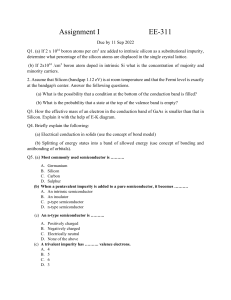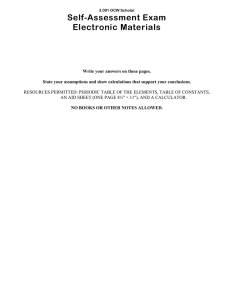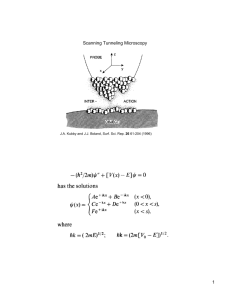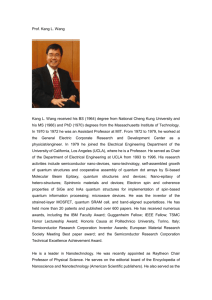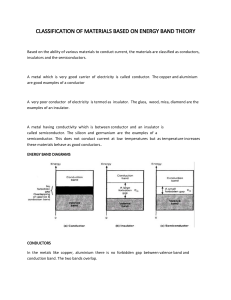EE 574 - Optical Materials and Devices
advertisement
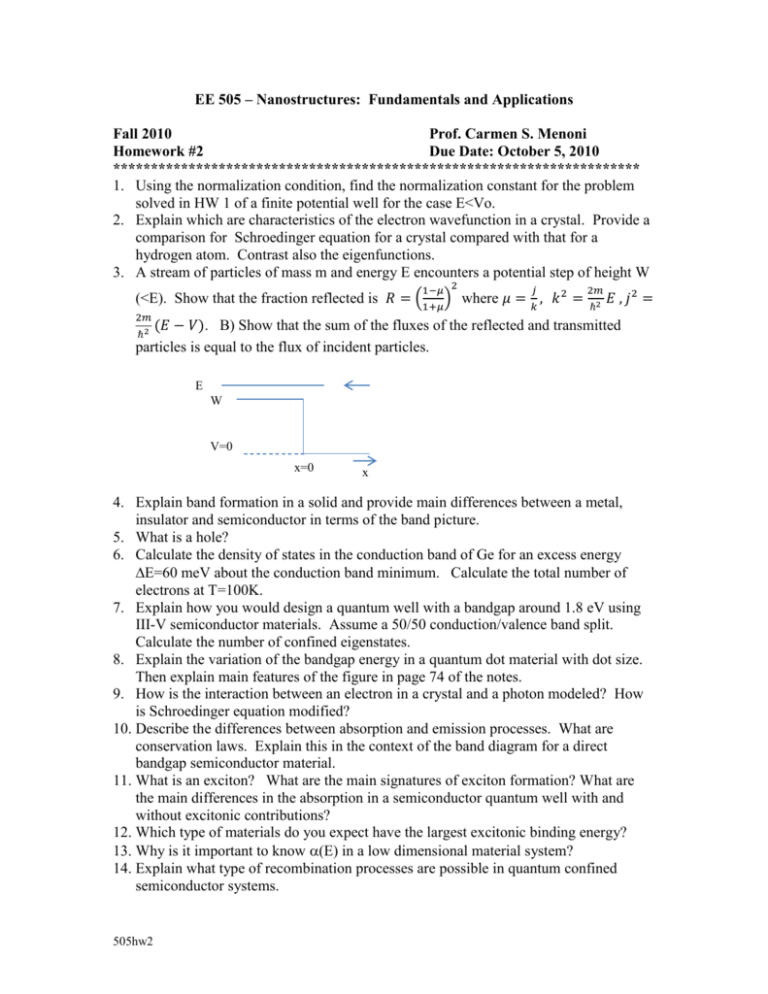
EE 505 – Nanostructures: Fundamentals and Applications Fall 2010 Prof. Carmen S. Menoni Homework #2 Due Date: October 5, 2010 ********************************************************************** 1. Using the normalization condition, find the normalization constant for the problem solved in HW 1 of a finite potential well for the case E<Vo. 2. Explain which are characteristics of the electron wavefunction in a crystal. Provide a comparison for Schroedinger equation for a crystal compared with that for a hydrogen atom. Contrast also the eigenfunctions. 3. A stream of particles of mass m and energy E encounters a potential step of height W 1−𝜇 2 𝑗 (<E). Show that the fraction reflected is 𝑅 = (1+𝜇) where 𝜇 = 𝑘 , 𝑘 2 = 2𝑚 ℏ2 𝐸 , 𝑗2 = 2𝑚 (𝐸 − 𝑉). B) Show that the sum of the fluxes of the reflected and transmitted particles is equal to the flux of incident particles. ℏ2 E W V=0 0 x=0 x 4. Explain band formation in a solid and provide main differences between a metal, insulator and semiconductor in terms of the band picture. 5. What is a hole? 6. Calculate the density of states in the conduction band of Ge for an excess energy E=60 meV about the conduction band minimum. Calculate the total number of electrons at T=100K. 7. Explain how you would design a quantum well with a bandgap around 1.8 eV using III-V semiconductor materials. Assume a 50/50 conduction/valence band split. Calculate the number of confined eigenstates. 8. Explain the variation of the bandgap energy in a quantum dot material with dot size. Then explain main features of the figure in page 74 of the notes. 9. How is the interaction between an electron in a crystal and a photon modeled? How is Schroedinger equation modified? 10. Describe the differences between absorption and emission processes. What are conservation laws. Explain this in the context of the band diagram for a direct bandgap semiconductor material. 11. What is an exciton? What are the main signatures of exciton formation? What are the main differences in the absorption in a semiconductor quantum well with and without excitonic contributions? 12. Which type of materials do you expect have the largest excitonic binding energy? 13. Why is it important to know (E) in a low dimensional material system? 14. Explain what type of recombination processes are possible in quantum confined semiconductor systems. 505hw2



